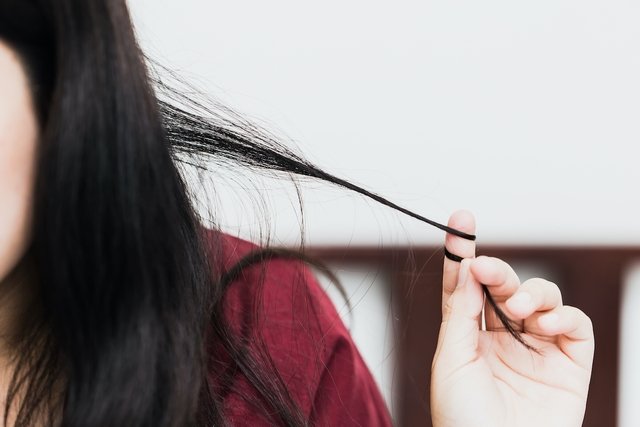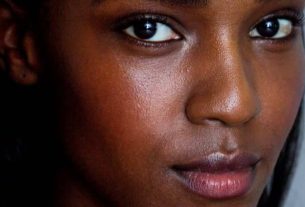Trichotillomania is a psychological disorder in which people tend to pull out their hair, eyebrows and beard uncontrollably. A person with this type of disorder may start by pulling out just a few hairs or strands, however, they can progress to removing entire strands of hair.
This habit of pulling out your hair has a cure and treatment must be recommended by a psychiatrist who generally prescribes medication for anxiety and depression, in addition to therapy sessions with a psychologist. However, it is important to start treatment soon, as it can take a long time, trichotillomania can cause baldness, and as some people with this disorder swallow their hair, complications can occur due to the accumulation of hair in the stomach or intestine.

Main symptoms
Trichotillomania, known as hair pulling, is a disorder that causes signs and symptoms such as:
- Touch your hair constantly;
- Repeatedly pulling or twirling strands of hair or eyebrow or eyelash hair;
- Having areas of the body or head with a lack of hair or hair;
- Sucking, chewing, biting or swallowing strands of hair;
- Feeling relief or pleasure after plucking hair or hair.
The diagnosis is generally made by a psychiatrist or psychologist, with the help of family or friends, through observation of behavior, checking the lack of hair in the scalp region, for example, and in some cases, the disorder is identified through symptoms such as abdominal pain, nausea and vomiting caused by ingesting excess hair.
People with trichotillomania often feel shame and deep sadness, as the lack of hair caused by the disease can be very evident, visible through bald patches on the head.
Furthermore, the habit of pulling out your hair can worsen in some situations, such as in periods of increased stress or anxiety or even in moments of relaxation, such as watching television, at the beach or driving, for example.
Possible causes
The causes of trichotillomania are not yet fully known, but it is known that factors such as childhood trauma, suffering from depression or obsessive compulsive disorder and having anxiety or stress can influence the emergence of this mania.
Some studies have been developed to show that some changes in specific regions of the brain may be involved in the emergence of this disorder, as well as people with a family history of trichotillomania are more likely to develop the same problems. Furthermore, trichotillomania happens more in childhood, between 9 and 13 years of age, however, it can affect people of any age.

How the treatment is carried out
Trichotillomania has a cure and treatment must be indicated by a psychiatrist who may recommend the use of antidepressant and anxiolytic medications, as the person who has this mania can often also have obsessive compulsive disorder or depression. Consultation with a psychologist may also be advised so that psychotherapy sessions can be carried out, such as cognitive-behavioral therapy.
In less severe cases of the disease, some small changes in daily habits may be enough to treat the problem, such as:
- Do activities that keep your hands busysuch as gardening, painting or cooking, for example;
- Tie your hair up with a tiara or wear a hooded sweater, especially to sleep;
- Brush the hair or wash it, replacing the urge to pull out hair.
You can also carry out relaxation and meditation activities to try to control anxiety and stress, such as doing some exercise sessions. yoga. See more about the health benefits of yoga.
What are the complications
The main complications that appear due to trichotillomania can be baldness, spaces without hair on the scalp, absence of eyebrows or eyelashes, failures in the beard and diseases in the stomach or intestine that occur due to the accumulation of hair in these organs.
To help control the symptoms of this disorder, it is important to control stress and anxiety, watch a video with tips on how to do this:
Bibliography
- NATIONAL ORGANIZATION FOR RARE DISORDERS. Trichotillomania. Available at: <https://rarediseases.org/rare-diseases/trichotillomania/>. Accessed on 20 December 2019
- TOLETO, Edson L. et al. Trichotillomania. Rev Psiq Clin. Vol.37, n.6. 251-259, 2010
- LIMA, Maria CP et al. Trichotillomania: diagnostic difficulties and report of two cases. Rev Paul Pediatr. Vol.28, n.1. 104-108, 2010

Sign up for our newsletter and stay up to date with exclusive news
that can transform your routine!
Warning: Undefined array key "title" in /home/storelat/public_html/wp-content/plugins/link-whisper-premium/templates/frontend/related-posts.php on line 12
Warning: Undefined array key "title_tag" in /home/storelat/public_html/wp-content/plugins/link-whisper-premium/templates/frontend/related-posts.php on line 13





